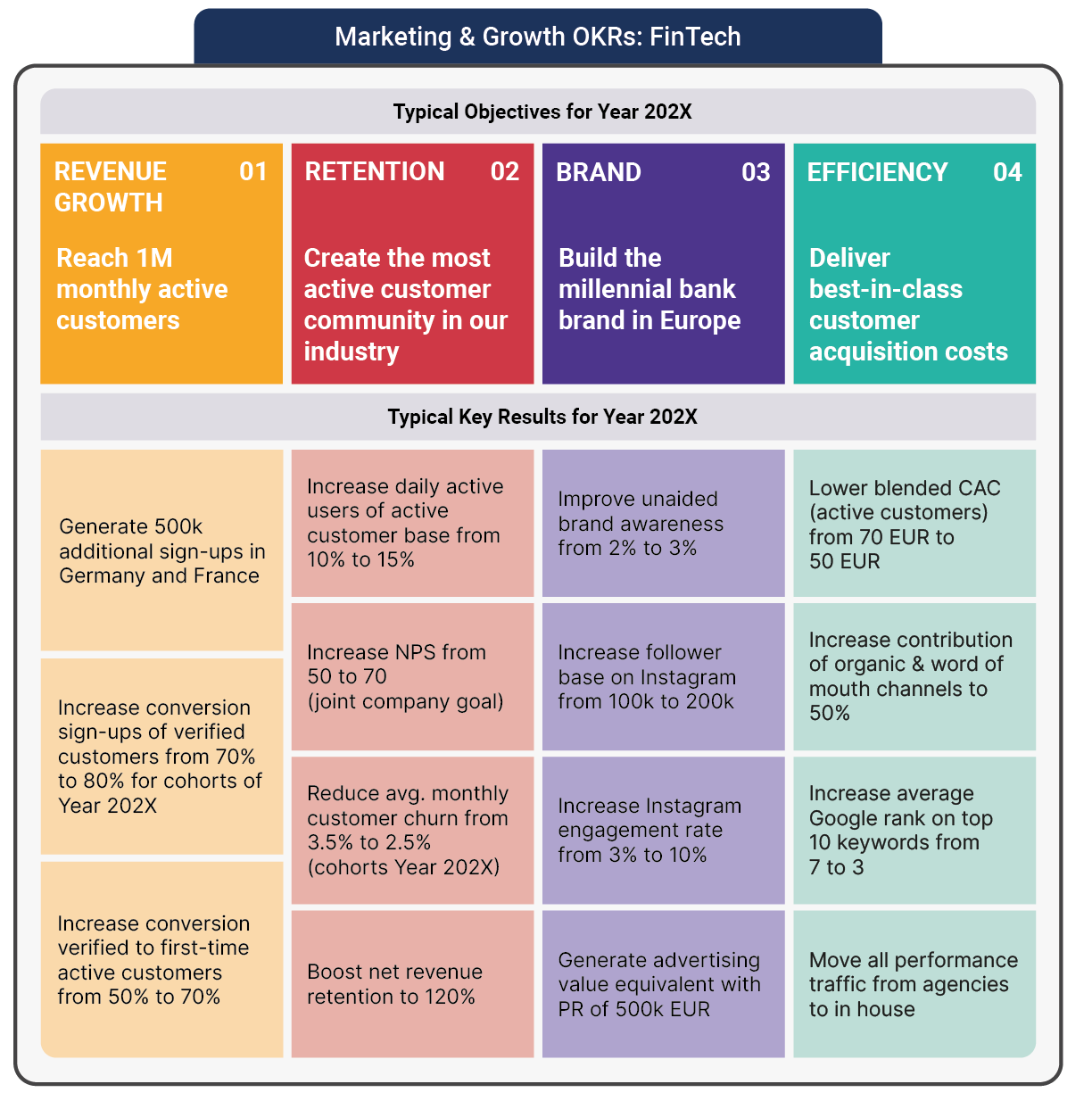When your startup is growing fast, the execution challenges can grow even faster. Suddenly, you lose direction, responsibilities blur and teams build silos. You’re stuck in a Gordian knot of execution. One way to break through? OKRs (Objectives and Key Results).
This framework for company goal setting is championed by some of the world’s most successful tech companies from LinkedIn to Zynga to Google. And OKRs are standard at some of European tech’s most sophisticated companies including N26 (where Martin was COO).
The objectives in OKRs refer to the 'what': inspiring and ambitious yet realistic goals that are connected to delivering business value. For example, one of fintech N26's objectives is to transform retail banking on a global scale, while the aim of retail company Zalando is to become the "starting point for fashion".
The key results are the 'hows', or measurable milestones. Once these results are achieved in full, the objective has also been reached. You either deliver on a key result, or you don’t. For example, a key result at the company level for N26 is to bring banking services to over 50m customers worldwide; Zalando measures its success by growing its gross merchandise volume on their platform to more than €30bn by 2025. Other typical key results could be to "increase the net promoter score by 10 points" or “increase employee engagement scores from 3.0 to 4.0”.
The graph below shows a set of typical OKRs for a marketing division at a fintech.

While a few very simple OKRs will suffice in the seed phase (“ship the MVP by December”), the point where a company employs 30 to 40 people (usually around Series A) is typically when a more sophisticated OKR process should be set up at the latest.
Here’s how it could look.
First, the executive team has to understand that stellar execution starts with having a clear company 'North Star'. After all, OKRs operationalize direction. This North Star consists of a crystal clear purpose (e.g. “create a world where everyone belongs”), a quantitative business ambition in 5-10 years (e.g. “achieve 100k guests per night by 2025”) and clarity on the unique value proposition provided to customers.
Using this 'North Star' as a guideline, in the first week of each quarter the executive team develops the top company OKRs by Tuesday, usually consisting of three objectives with three to five key results. Then, each division — such as product, technology, marketing and operations — defines their OKRs based on the company’s direction, usually by Thursday. Full company alignment of all OKRs is then done on Friday in an all-hands meeting, with the process, therefore, taking one week in total.
For the OKRs process, the company outlines some clear guidelines:
- Formulate OKRs ambitiously. Ambitious but specific goals often lead to unparalleled performance — this is one of the most validated hypotheses in management literature, with more than 1k studies on it. Ideally, teams should only meet ~70% of the OKRs. If they constantly achieve 100%, the goals were likely not ambitious enough. As former Revolut COO Richard Davies says, ”Setting stretch goals here can then drive creative thinking on how to achieve breakout from the industry — and a make-it-happen mentality.”
- Use OKRs as a joint learning tool. Just as OKRs should not be fully achievable, failure and learning are key parts of the system. This is where 'committed' and 'aspirational' OKRs come into play: while an aspirational OKR is a 10x goal or a 'moonshot' (e.g. “vaccinate every child everywhere”), a 'committed' goal is closer to business-as-usual (e.g. “drive down the average answering time in the contact centre to below 1 minute”). While it is expected that committed OKRs are delivered at a rate of 100%, aspirational OKRs are achieved at a rate of ~70% on average.
- Phrase key results as measurable outputs, not activities. Key results focused on output are strong and should be prioritized. They are either based on quantitative metrics (e.g. “improve the net promoter score by 10 points”) or qualitative assessments (e.g. “launch a closed beta product version in the US”). Activity-based key results such as 'analyze', 'assess' or 'explore' (e.g. “analyze ways to boost our conversion rate”) are weak and should be avoided.
- Focus on three to five key results that matter. Defining more than five key results per objective can run the risk of teams becoming unfocused. The fewer key results needed to fully achieve the objective, the better.
- Establish OKR tracking. At the end of the performance period (e.g. each quarter), each team ideally scores the progress of each key result. Typical tools that can be used for this include plai.team, Perdoo and Workpath.
- Do not connect OKRs to bonuses or promotions. Making bonus payouts dependent on achieving OKRs disincentivises teams to agree on stretch goals. You should establish a separate process for bonuses, appraisals and promotions.
Bonus: For Star Wars fans, here’s a great description of how to explain this in an easy way to your teams. And if you’d like to find out more about how to take your startup’s execution abilities to the next level, be sure to check out "Measure What Matters" by John Doerr.
This article is an abridged version of a chapter of the book “The Builder’s Guide to the Tech Galaxy – 99 Practices to Scale Startups into Unicorn Companies”.
Martin Schilling is an author, investor, entrepreneur and former COO of fintech N26.
Thomas Klugkist is an author, media and communications manager and consultant for scale-ups.


